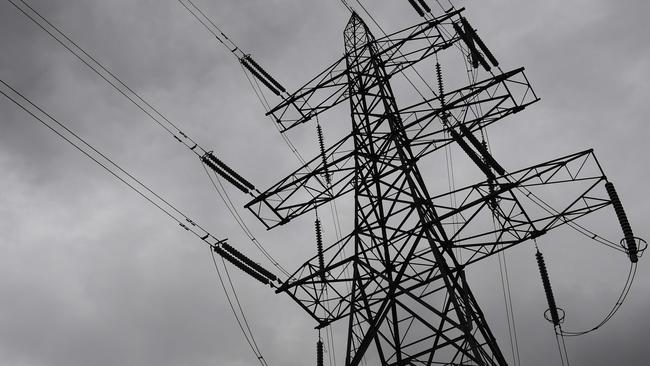Risk of summer blackouts rises with more generator failures
Declining reliability of coal and gas generators is heightening the risk of blackouts and the crisis will only worsen.

East coast households and businesses face a higher risk of blackouts this summer, with more generator failures likely on hot days, the energy market operator has warned.
Declining reliability of coal and gas generators was blamed for the heightened risk of blackouts and the situation will worsen because of the staged closure of AGL’s Liddell coal-fired plant in NSW by 2023.
The Australian Energy Market Operator yesterday called for urgent action, including speeding up investment in new transmission lines between states and the creation of an electricity supply reserve to deal with increasingly unreliable generators, especially in Victoria.
In Victoria this summer, unplanned outages at Loy Yang A2 and Mortlake 2 “pose a significant risk” of insufficient supply that could lead to involuntary load shedding, AEMO said, potentially leaving up to 1.3 million households without power.
AEMO has been forced into increasingly frequent and expensive market interventions, such as leasing diesel back-up generators and ordering expensive gas-fired plants into the market to guard against the risk of a thermal generator failing or a change in the weather, such as a lack of wind, knocking out renewable generation.
The operator’s chief executive, Audrey Zibelman, said such “reactive” measures imposed higher costs and risks to the reliability of the system, and were not sustainable in the long run.
“At present, AEMO does not have the tools or mechanisms to enable cost-effective access to sufficient resources for all hours of the year, so we are forced to use more emergency actions that impose unnecessary risk and costs on consumers, just at a time where the goal is to pursue more cost-effective outcomes,” Ms Zibelman said.
The warning came as the Australian Competition & Consumer Commission said big industrial users of electricity in NSW and Victoria would keep paying up to three times historic prices for gas next year, despite the prospect of a domestic supply shortfall easing.
Tariffs offered by gas retailers are expected to stay at about $10 to $12 a gigajoule in the two largest states next year, quashing hopes that the high prices of recent years might recede as more local gas was made available.
Cutting prices has been the government’s main focus. Surging electricity and gas costs have put pressure on household budgets and forced some companies out of business.
A retailer reliability obligation was introduced from July 1, forcing electricity companies to guarantee dispatchable power for businesses and consumers.
AEMO said unplanned outages at the Loy Yang A coal-fired station and a halving in capacity at the Mortlake gas generator following an explosion last month were the most immediate dangers for the summer peak demand season. There would be a significant risk of supply falling short and “material” load shedding or blackouts.
The outages have taken 759MW of capacity out of the market until late December, but AEMO said there was a 30 per cent chance the Loy Yang outage would extend past that and a 60 per cent chance that Mortlake would.
AEMO said the situation was not yet bad enough to trigger the reliability obligation, but it underlined how peak demand and generation failures would leave Victoria exposed to supply gaps and blackouts.
AEMO was rebuffed earlier this year when it called for a permanent strategic reserve of electricity after it was forced to institute rolling blackouts to 200,000 Victorian households and Alcoa’s Portland aluminium plant when five thermal generators were knocked out in January.
Energy Minister Angus Taylor said Victoria’s meeting the reliability standard was not a guarantee that the lights wouldn’t go out in that state this summer.
He said 200,000 people lost power last year when it “barely” complied.
“When Victorians flick the switch, they need to be confident the lights will turn on — and stay on,” Mr Taylor said. “The Andrews Labor government has created unnecessary risk to the affordability and reliability of the NEM (national energy market).”
Federal government moves to re-regulate energy prices have hit profits in the sector. EnergyAustralia, one of the so-called big three integrated generators and suppliers, reported a 63 per cent fall in the June half-year. AGL and Origin are yet to report results.
The warnings in the Electricity Statement of Opportunities, which AEMO uses to forecast the needs of the national electricity market, highlighted the growing unreliability of thermal generation units in extreme circumstances. Hot weather can cause a spike in demand, but also increases the risk of generators failing.
Reliability for peak summer periods would be only slightly better beyond 2020 until new transmission and dispatchable supply and demand resources came on line.
In the gas market, the ACCC said sufficient supplies of gas were now expected to meet both domestic and export demand in 2020 due to extra output and lower demand. However, the regulator noted that the three largest gas retailers — Origin Energy, AGL Energy and EnergyAustralia — reaped higher than expected average margins for 2014-2018 from their big customers.
Mr Taylor said the findings showed the importance of freeing up gas restrictions in southern states as well as pending regulatory reforms, including potential domestic reservation, pipeline reforms and changes to the export trigger.

To join the conversation, please log in. Don't have an account? Register
Join the conversation, you are commenting as Logout